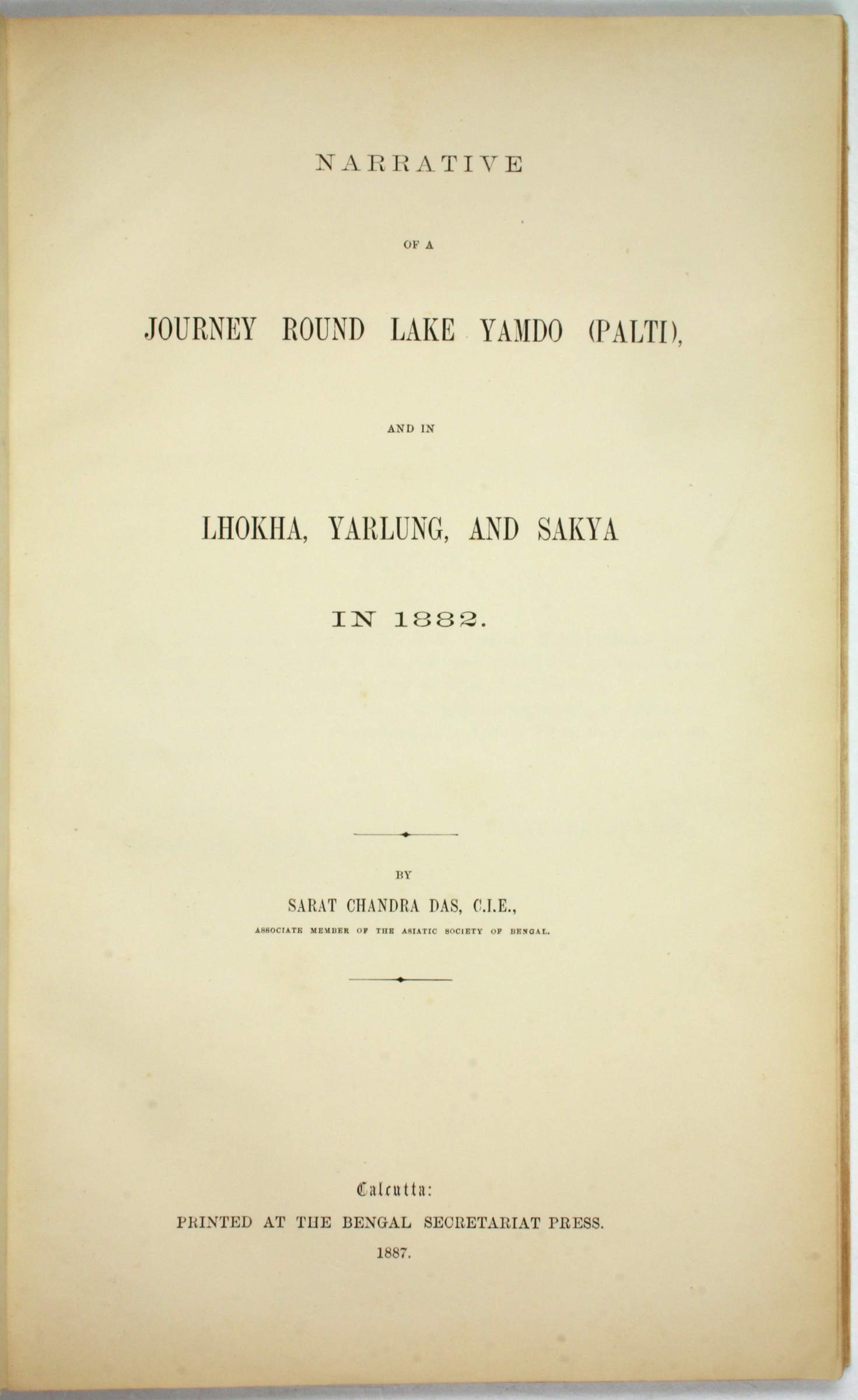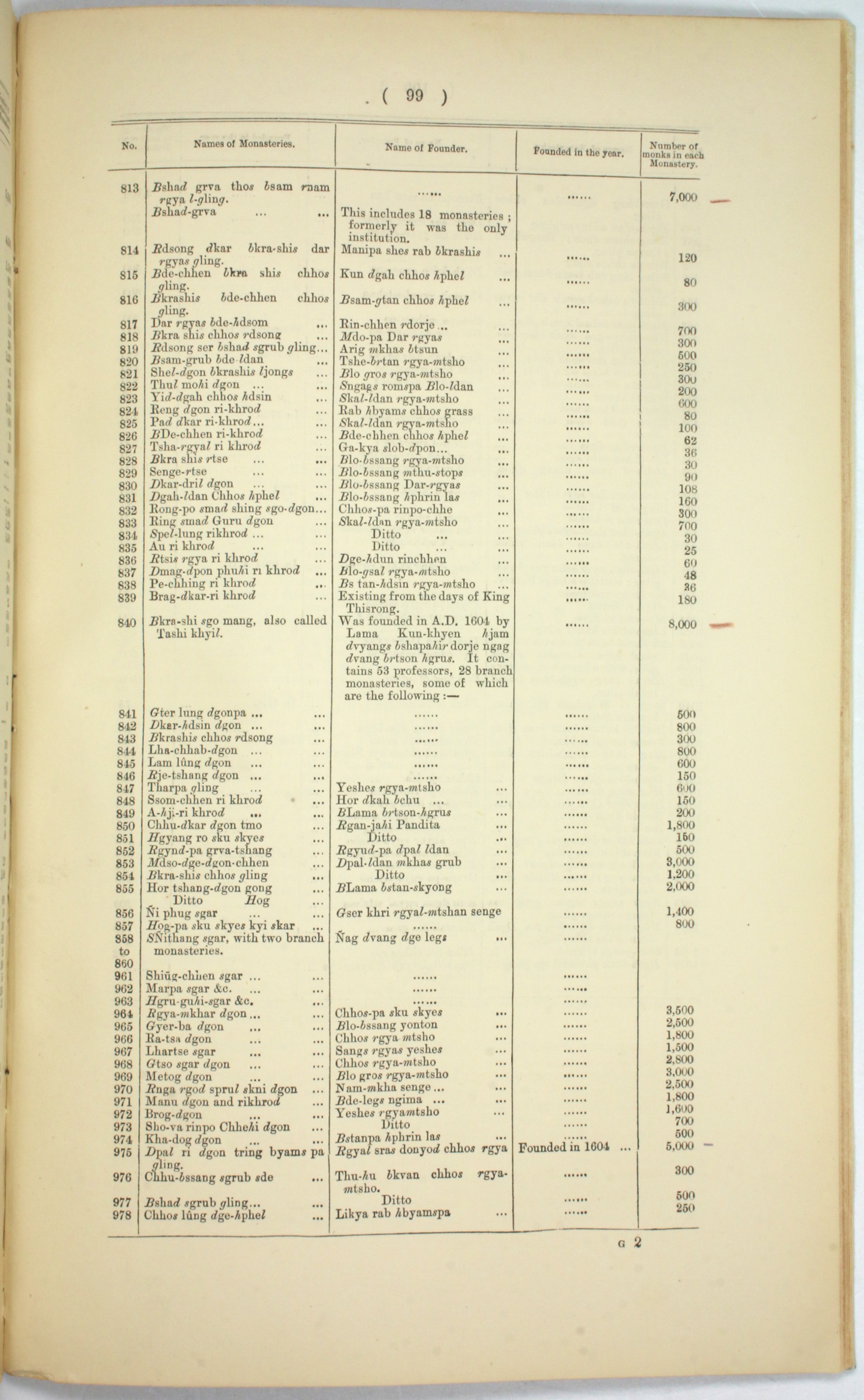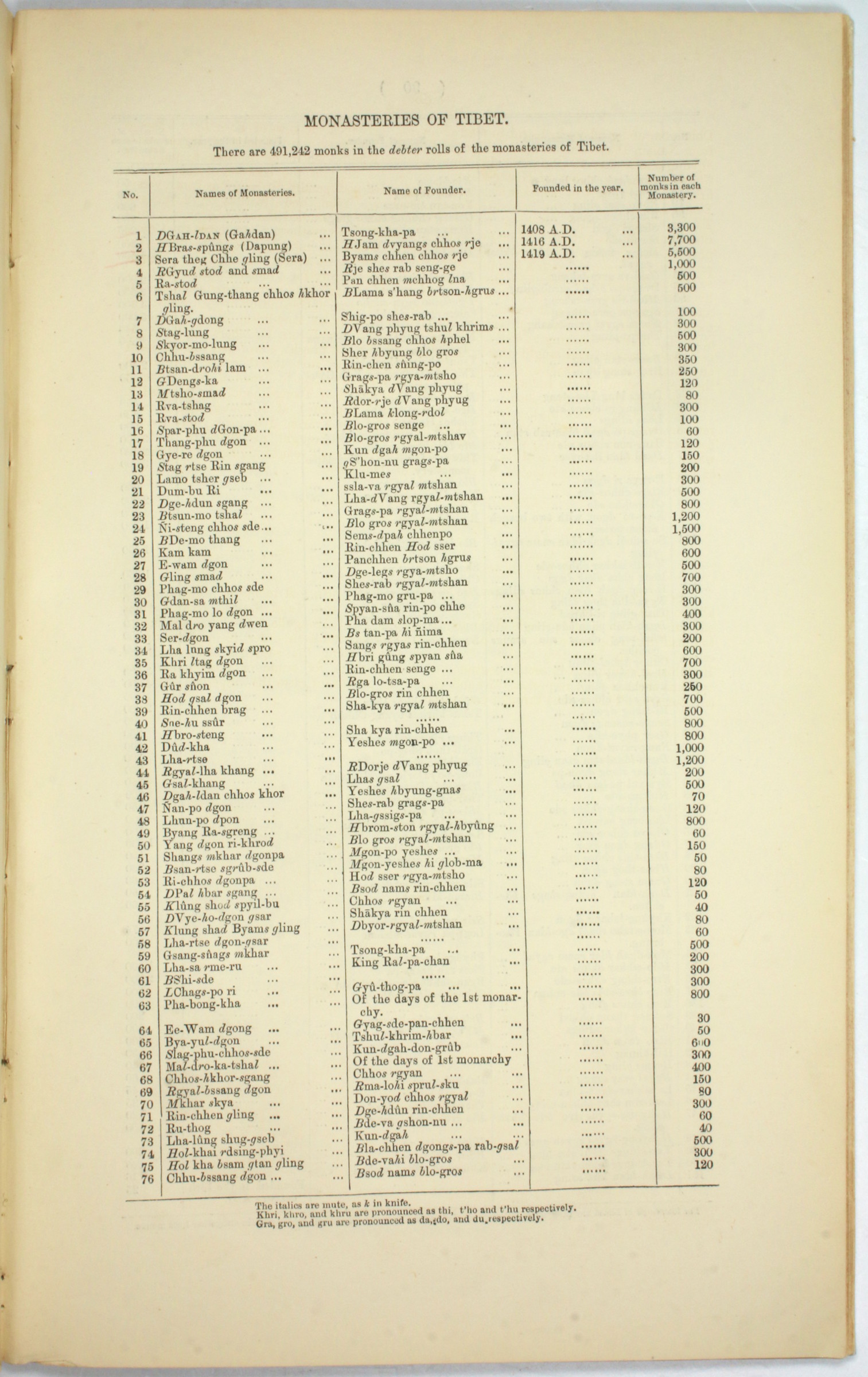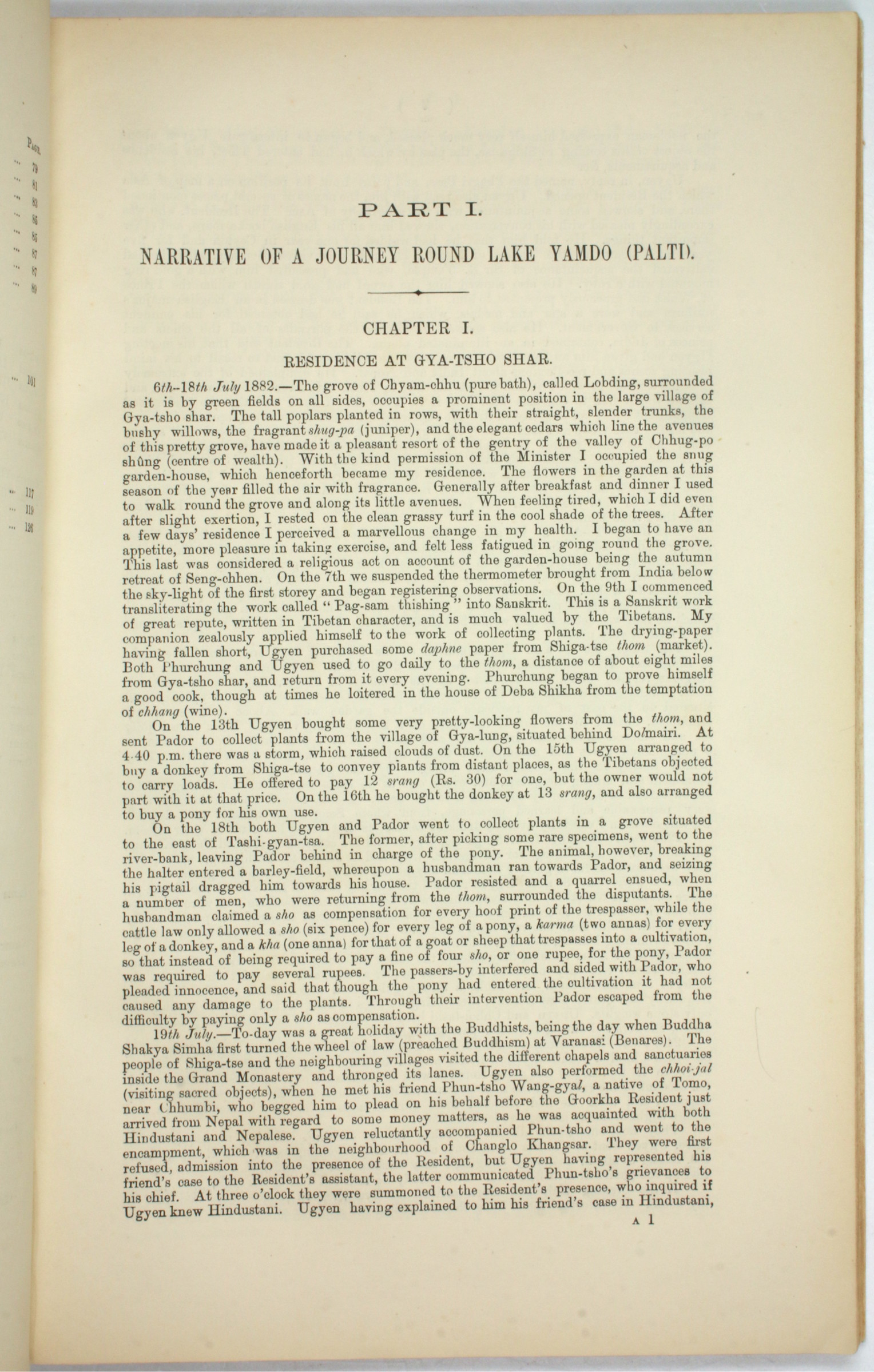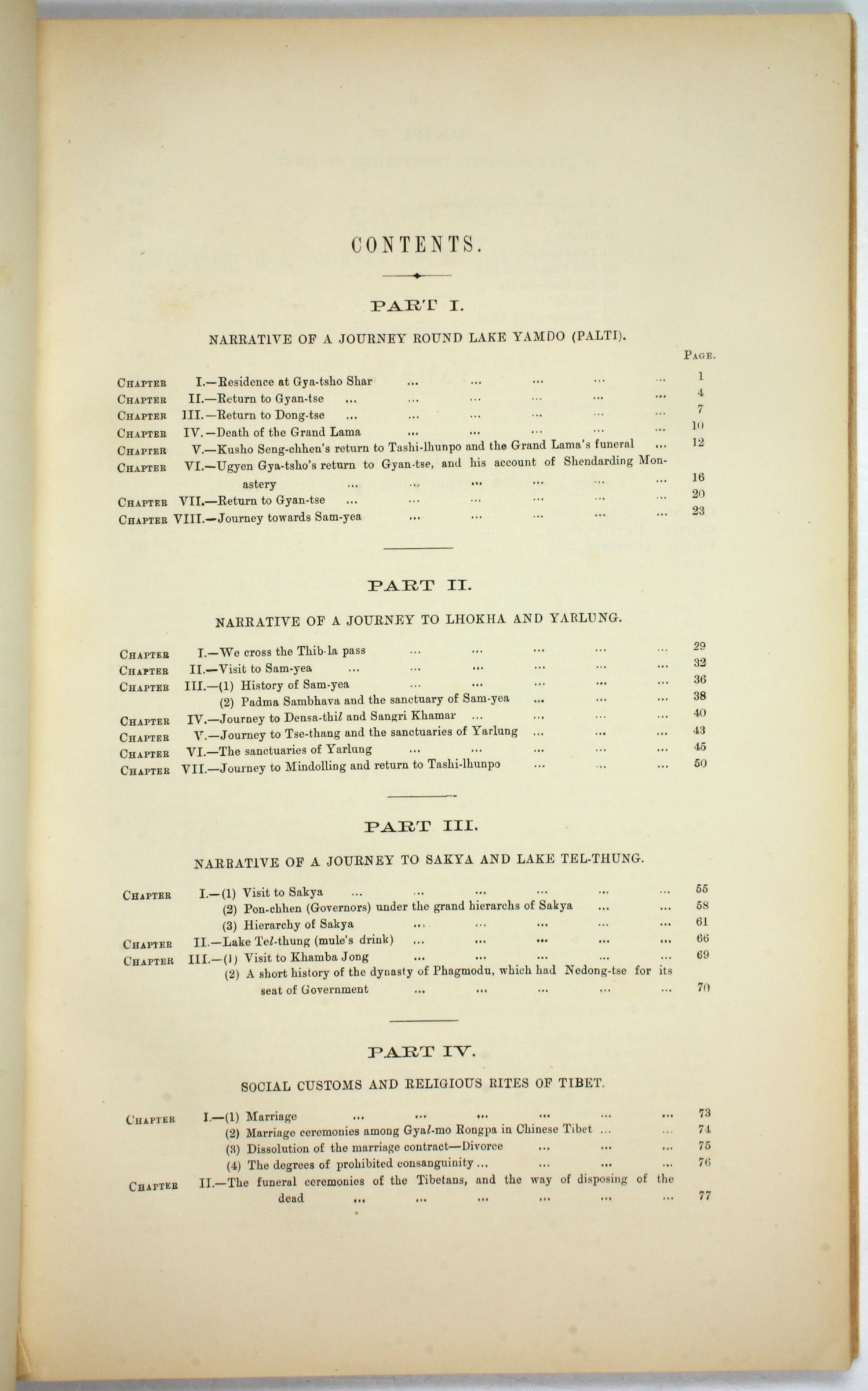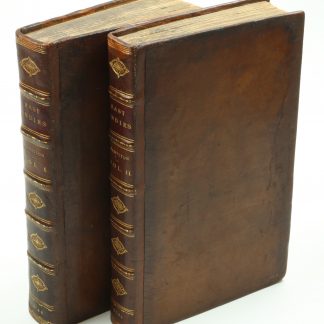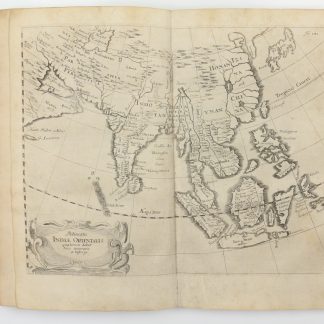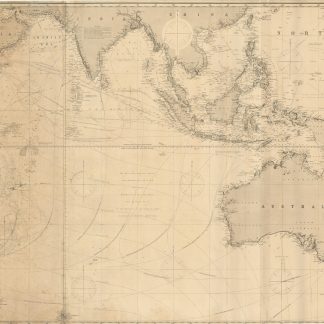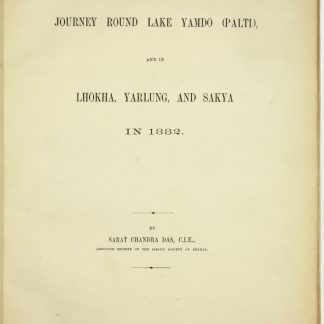A Bengali disguised as a Tibetan monk: the first edition of Sarat Chandra Das's 1882 account of Tibet
Narrative of a Journey Round Lake Yamdo (Palti), and in Lhokha, Yarlung, and Sakya in 1882.
Tall folio (207 x 329 mm]. (4), II, 130 pp. Bound to style in later brown card covers.
€ 18.000,00
Extremely rare first edition - likely printed for official use only, and restricted to just 100 copies - of this remarkable account of the author’s journey around Tibet in 1881/82. Fluent in the Tibetan language and disguised in the robes of a lama, Das was offered unparalleled access to monasteries, cities, and the Tibetan ruling elite - unlike his British contemporaries, whom the Tibetans viewed with deep suspicion. "When, in 1901, Kipling immortalized the pundits in Kim, the character of the secret agent Huree Chunder Mookerjee was most probably based on Das" (Waller, The Pundits: British Exploration of Tibet and Central Asia, p. 193). "When the British finally prised open the doors to Tibet with the Younghusband Expedition [i.e. the invasion of 1903/04], they were indebted for many of the details on their maps, and for the description of Lhasa, to the work of Sarat Chandra Das" (ibid, p. 206).
The intention of Das's expedition was to counter the overtures made towards Tibet by the Russians, principally the explorer Nicolai Prejevalsky (who died in 1879 on his second attempt to enter the country). According to Howgego, "on the 11th July 1881, Das left Darjeeling on a second expedition to Tibet, crossing the high glacier pass Jongsong La and arriving at Tashilunp on the 12th September after a difficult journey. He also visited the ancient monastery of Sakya, where he discovered many ancient and lost Sanskrit books, most of which he smuggled back to India. Proceeding to Lhasa, he passed a huge lake which he named Yamdo Croft after his mentor [Sir Alfred Croft, Director of Public Instruction in Bengal]. It was not until Das had returned safely to Sikkim that the Tibetan authorities became aware that their monasteries had been infiltrated by a foreigner who had taken away not just books but a wealth of political and economic intelligence, largely confided to him by unsuspecting officials […] Das returned to Darjeeling on the 27th December 1882 with a collection of more than 200 volumes of manuscripts and block prints obtained from the greatest libraries of Tibet".
Waller suggests that Rudyard Kipling's choice of Das (1849-1917) as a model 'secret agent' was well-founded. "Das was a contrast to most of the other pundits. He was not an Indian from one of the hill peoples [… but] a Bengali from Chittagong, an educated man, a schoolmaster who taught himself colloquial Tibetan, and who was able, because of his knowledge of the religious customs of Tibet, to participate in the lives of the Tibetan ruling elite […] Unfortunately, the later discovery of the real nature of Das’s mission by the Tibetan authorities only increased their desire to exclude travelers from visiting Tibet and brought down severe penalties on those who had assisted him […] The prime minister at Tashilhunpo was subjected to daily public beatings in the market-place in Lhasa and then murdered and his body thrown into a river" (p. 206).
A drastically revised edition of Das's account, printed in London, was not released for public consumption until some 20 years after the original expedition (Journey to Lhasa and Central Tibet, 1902). The present true first edition is exceptionally rare, even in institutional libraries: OCLC shows just 1 copy in the UK, and 5 in the US. We can find no record of any copy offered in Anglo-American auctions of the last 50 years.
A very fresh copy; unobtrusive Ink stains on pp. 38-39, otherwise excellent.
Yakushi, Catalogue of the Himalayan Literature (1994), D36. Marshall & Lamb, Britain and Tibet 1765-1947: A Select Annotated Bibliography (2005), #2071. Not in Cordier.

